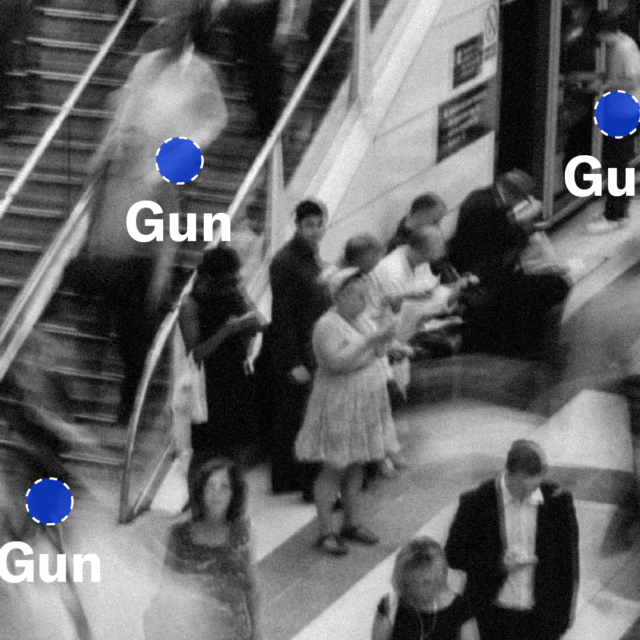City Dashboard: Gun Homicide
Last Updated: 10.29.2024
Summary
Across the United States, gun homicides dropped by a record-setting -11.3 percent in 2023.1 Everytown Research analysis of Federal Bureau of Investigation, “Expanded Homicide Data, Table 8: Murder Victims by Weapon, 2019–2023,” Crime Data Explorer, https://cde.ucr.cjis.gov/LATEST/webapp/#. By comparison, national murder rates dropped 10.0 percent from 1995 to 1996. Federal Bureau of Investigation, “Crime in the United States 1996,” September 1997, https://ucr.fbi.gov/crime-in-the-u.s/1996. In effect, 1,715 fewer lives were taken by gun homicides in 2023, compared to 2022. Aggravated assaults involving guns, robberies involving guns, and overall violent crime fell along with it (-6.6 percent, -5.1 percent, and -3.0 percent, respectively).2Federal Bureau of Investigation, “UCR Summary of Crime in the Nation, 2023,” September 2024, https://cde.ucr.cjis.gov/LATEST/webapp/#/pages/explorer/crime/special-reports. Post-COVID-19 “returns-to-normal” likely played a role in these declines, but so too did a series of federal actions that allowed cities across the country to scale up meaningful gun violence prevention strategies.
While this progress is worth celebrating, every life taken or forever changed due to gun violence is an avoidable tragedy. Factors like systemic racism, social determinants of health, and state-level gun safety policies contributed to some communities reaping these benefits more than others. In 2023, Black people in the US died by gun homicides at a rate six times higher than white people.3 Everytown Research analysis of FBI NIBRS data, 2023, accessed October 2024. In FBI-reporting cities with populations of at least 65,000, Black people in the US died by gun homicides at a rate of 27.5 per 100,000 people, and white people died by gun homicides at a rate of 4.4 per 100,000 people in 2023. And as always, gun homicides continued to cluster in America’s cities. Over half of the country’s reported gun homicides occurred in just 42 cities, including Chicago, Philadelphia, Memphis, Houston, and others.4Everytown Research analysis of FBI NIBRS data, 2023, accessed October 2024. The full list of cities includes: Chicago, IL; Philadelphia, PA; Memphis, TN; Houston, TX; Los Angeles, CA; Washington, DC; Dallas, TX; Detroit, MI; Baltimore, MD; New York, NY; Phoenix, AZ; Kansas City, MO; Milwaukee, WI; Indianapolis, IN; St. Louis, MO; San Antonio, TX; Louisville, KY; Cleveland, OH; Atlanta, GA; Oakland, CA; Birmingham, AL; Nashville, TN; Las Vegas, NV; Albuquerque, NM; Charlotte-Mecklenburg, NC; Fort Worth, TX; Columbus, OH; Denver, CO; Greensboro, NC; Minneapolis, MN; Cincinnati, OH; Portland, OR; Richmond, VA; Austin, TX; Little Rock, AR; Oklahoma City, OK; Seattle, WA; Baton Rouge, LA; Gary, IN; Newark, NJ; Stockton, CA; and Rochester, NY.
The FBI is the leading source of city gun violence data, covering over 94 percent of the US population in 2023.5Federal Bureau of Investigation, “UCR Summary of Crime in the Nation, 2023,” September 2024, https://cde.ucr.cjis.gov/LATEST/webapp/#/pages/explorer/crime/special-reports. Everytown’s City Gun Homicide dashboard allows users to explore gun homicide trends in nearly 600 cities with populations of 65,000+ that reported data to the FBI from 2019 to 2023.



